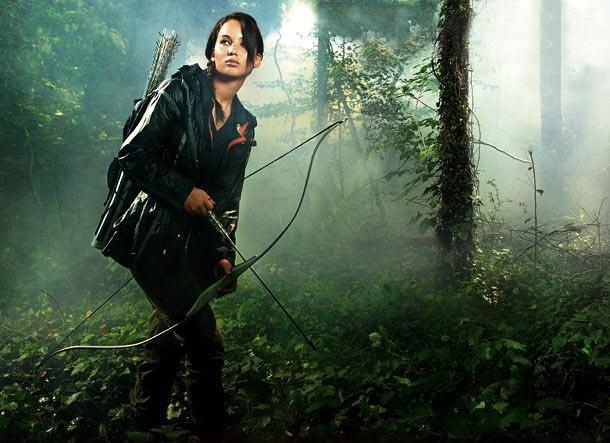‘Mockingjay: Part One’ delivers a powerful punch
The hero of Mockingjay: Part One is Katniss Everdeen, a traumatized young woman struggling to lead a rebellion.
November 25, 2014
It seems as if the final movie of every popular teen series is always split into two parts, and the first part always seems worse than the second. For example, Harry Potter and the Deathly Hallows: Part One was lackluster.
However, Hunger Games: Mockingjay Part One goes against the norm as an entertaining affair. Despite being a war movie, it takes a different perspective to the action. Instead of endless scenes of mindless bloody combat, the movie explores how propaganda is used as well as the effects of decisions made by leaders during the war.
Critics of the movie may think there are too many scenes involving discussions around a table. However, one must consider the fact that wars are often run from such meetings, as people have to discuss maneuvers and strategies somewhere.
In the movie, Katniss Everdeen (Jennifer Lawrence) is no longer the fiery and strong Hunger Games victor, but rather a traumatized young woman struggling to make sense of her world.
After initial reluctance to become the “Mockingjay,” Katniss eventually agrees to be the face of the rebellion. However, her job is not easy. President Snow (Donald Sutherland) has captured her love interest, Peeta Mellark (Josh Hutcherson), and is using him against her.
In order to avoid the rather clichéd plot line of rising against a dystopian government, the actors’ expressions and skills are used to further the story instead of the plot. One could argue that there were too many close ups and face shots used.
Nonetheless, what the movie lacks in action, it makes up for in detail and power. Because the movie is not focused around battle, it leaves more room for development of characters, such as Finnick Odair (Sam Claflin). The scenes are rawer and more emotionally charged.
Watching Mockingjay: Part One requires a little thinking, for it is not just battle after battle. Certain viewers may not have enjoyed this installment in the series because of the lack of action in the movie. There were no kill-or-be-killed and survival-of-the-fittest moments that marked the first two movies in the Hunger Games series.
Aside from the actual plot of the movie, however, everything else is first-class. The contrast between the Capital and the districts is portrayed well through the costumes, with the Capital represented as stark white with the peace keepers, captive Peeta and President Snow. In contrast, the citizens of District 13 dress in plain navy blue jumpsuits.
The score was especially powerful, highlighting action scenes and becoming quiet for tense, nerve-racking moments. Jennifer Lawrence’s rendition of the song “The Hanging Tree” is eerily haunting.
Fans of the book will be happy to know that Director Francis Lawrence followed the book closely, although in truth the first half of the book is unquestionably dull.
Although Katniss is supposed to the main character, the movie seems to almost demote her to a secondary role. This seems especially true as the main action sequence of the film does not even involve her as she views it via screens. However, the fact that the movie is not focused entirely on Katniss allows for the development of other characters.
The movie may be a little confusing for people who have not read the books or seen the previous movies, as certain plot details are not entirely explained. It is up to the viewers to familiarize themselves with the story’s background.
All in all, the movie was solid, if a little bland, thus earning a B grade. The purpose of the movie is to set the stage for the conclusion in Mockingjay: Part Two, but it is still worth watching.


